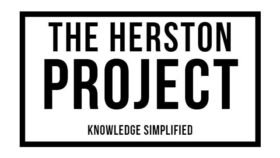The ideas and images in this post have been inspired by Rebel Ideas by Matthew Syed. Make sure to check out my Rebel Ideas by Matthew Syed: Summary too!
Diversity is all about being different. When it comes to understanding the world, speaking to people who are different to you is important if you want to see the world for how it really is. While being surrounded by others who all share the same perspectives, assumptions and beliefs is validating, important learning opportunities are being denied. When others are agreeing, mirroring and parroting each other it can be easy to fool yourself into thinking you are basking in progress. But the more likely outcome is you are entrenching other’s blind spots and becoming ignorant to mistakes which are likely to happen.
When we look at the world, we are not looking at it as its whole, but we are instead seeing it through our perspective. Syed’s image below summaries that perfectly. We are oblivious to what we do not understand. When living life through this perspective, you are missing so many other important things which you should be seeing. Mistakes that happen either become bad luck or the result of somebody else’s fault, instead of you not being able to see it coming because of your narrow field of view.

But working with others is not enough. Even if you have a large team, if you do not embrace diversity then everyone’s frames of references overlap. Instead of seeing the world for what it really is, you find yourself in a tricky situation of truly believing that’s how things are. When multiple similar people all see the same thing then the crowd mentality may take over. People think great progress is being made, but it’s a red-flag, instead of progress being made, everyone is entrenching everyone else’s ideas, rather than participating in an open critical discussion.

So now let’s look at how a diverse team will function. Imagine you now have colleagues who have all had different experiences, achievements and problems in their lives. You now have a richer and more nuanced understanding of the world. Complex problems require multiple layers of perspective. Whilst individuals can provide useful insights, they will inevitably have their own blind-spots. Other colleagues can make them aware to this. By using their multiple frames of reference, although the perfect answer may not come along, and it may take more time rather than an agreeable team, you can be rest assured that critical discussions have taken place instead of parroting and mirroring. I talk about this more in my article Meetings are a Terrible Idea: Here Are 4 Alternatives To Think About

Another interesting way to look at this is by another example provided by Syed. When you are looking to build a team, if you have 10 of the smartest minds in the room, but they all think alike, you’re limiting your perspectives to effectively only one person. But now put 10 different minds with 10 different perspectives, there is no limit on the creativity, uniqueness and ingenuity of the ideas presented.
Moving away from theoretical images and examples you can see the benefits of diversity through research conducted by Chad Sparber, an American economist. He found that by increasing racial diversity by one standard deviation, productivity increased by 25%.
Overall, when recruiting teams who all think alike, you are opening yourself up to failure. The teams will fail in predictable ways by entrenching each other’s blind spots and missing important alternative perspectives. But by embracing diversity you can open up your field of view to ideas and possibilities you may have never considered before.


Pingback: Rebel Ideas by Matthew Syed: Summary – The Herston Project
Pingback: 3 Methods You Can Use to Think Creatively – The Herston Project